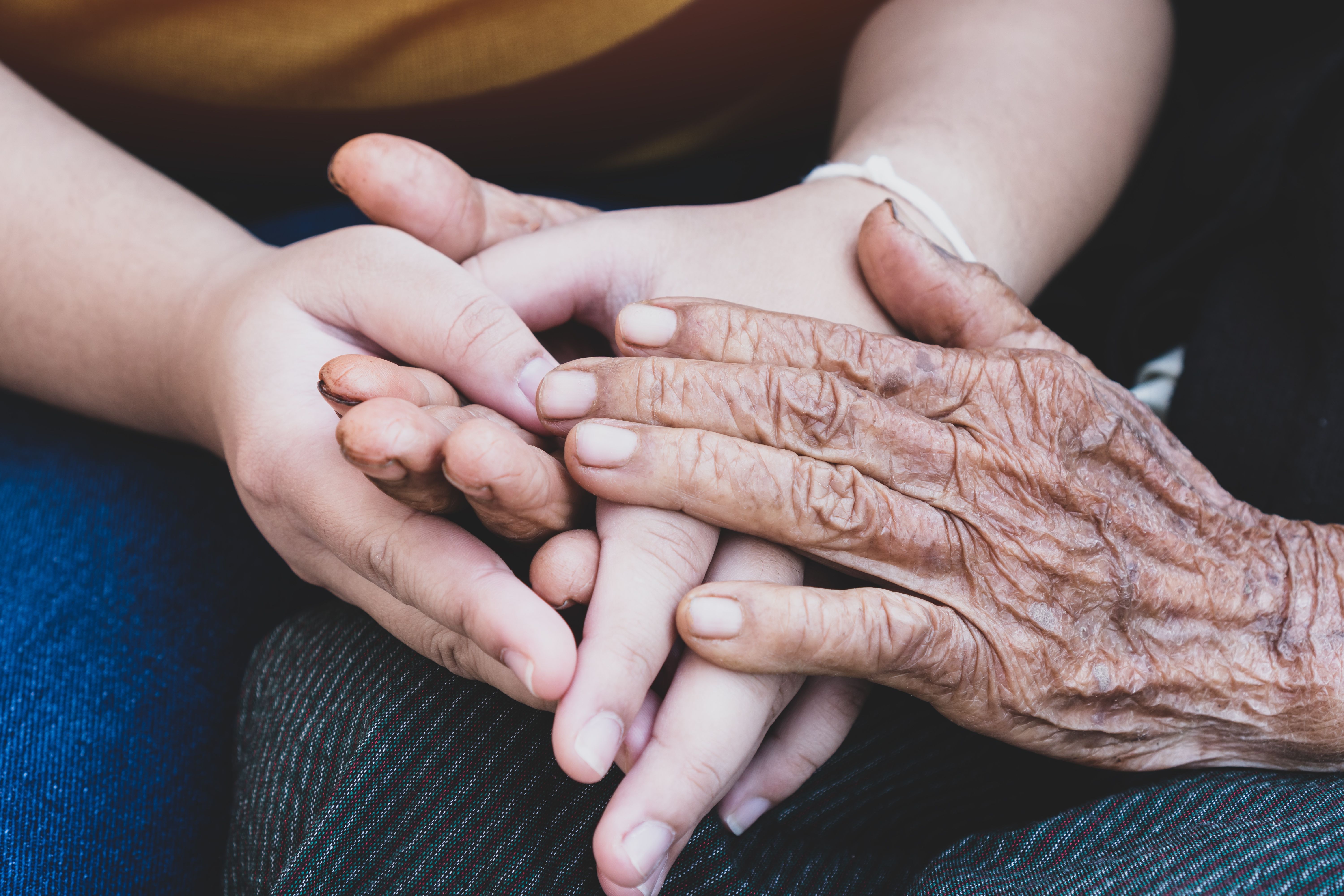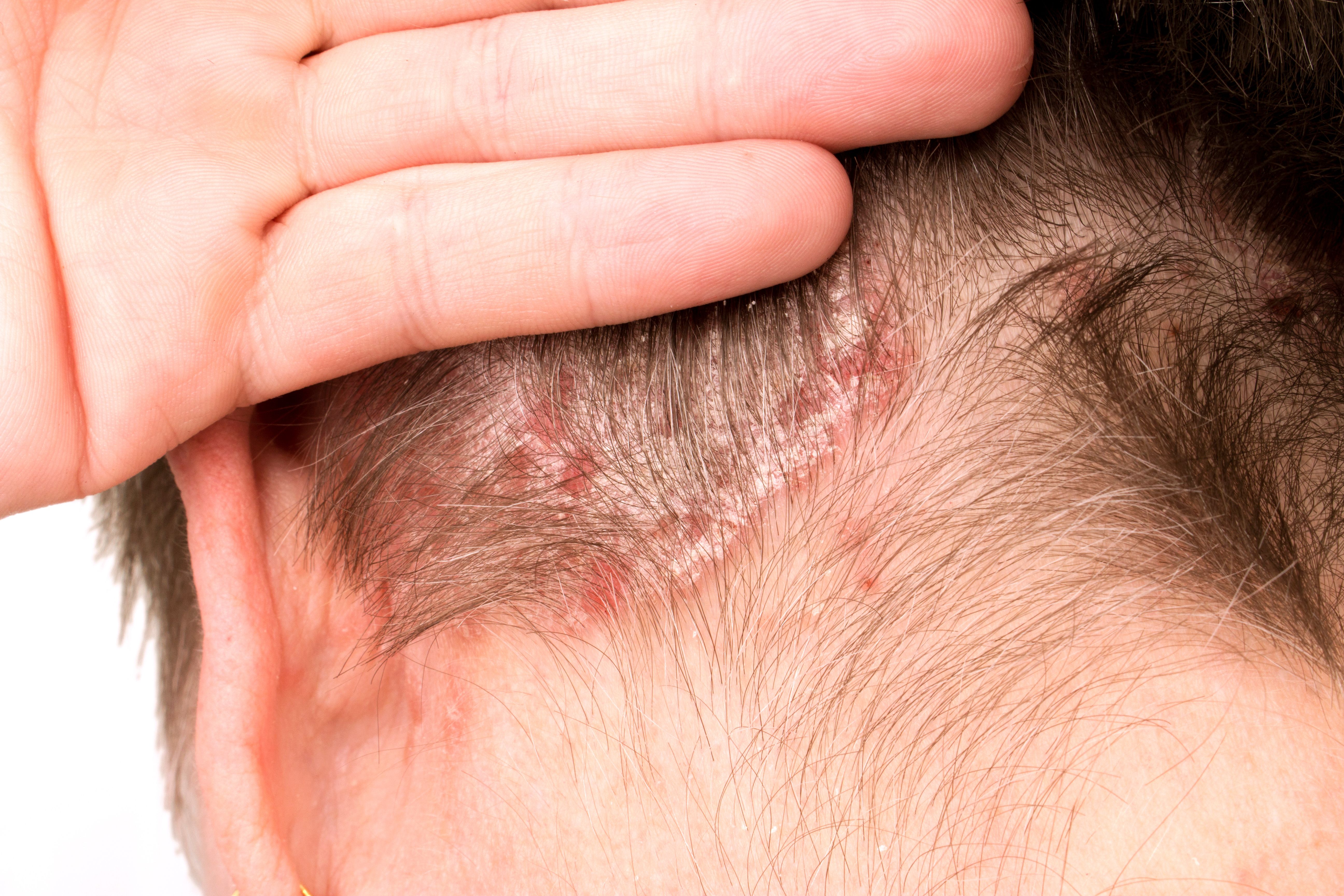News
Article
Unveiling Treatment Options for Alopecia Areata
Author(s):
In a European expert consensus statement, researchers discover the exciting breakthroughs for patients with alopecia areata (AA). This article explores the unlocked potential of combination therapies and targeted biologics to regrow hair and transform lives.
Patients with alopecia areata are examined by a trichologist prior to diagnosis | Image Credit: familylifestyle - stock.adobe.com

The European Medicines Agency (EMA) and FDA have approved various therapies for patients with alopecia areata (AA) based on clinical experiences from dermatologists.1 However, it is important to note individual plans should be established for every patient while considering their unique patient characteristics, according to a study published in the Journal of the European Academy of Dermatology & Venereology.
Patients with AA have an incurable, autoimmune form of hair loss that is a result of the loss of immune privilege in the hair follicle. Patient quality of life (QOL) is one of the major factors impacted by AA with around 62% of patients making life choices based on their AA severity.
Some autoimmune comorbidities linked to AA include thyroiditis, celiac disease, vitiligo, type 1 diabetes, rheumatoid arthritis, systemic lupus erythematosus, and myasthenia gravis. Atopic diseases associated with AA are asthma, allergic rhinitis, atopic dermatitis, and allergic conjunctivitis. Research has also found evidence of an increased risk of developing hypertension, hyperlipidemia, obesity, metabolic syndrome, and cardiovascular diseases.
Dermatologists often diagnose patients with AA using tracheoscopy evaluations and thorough clinical examinations. Tracheoscopy-guided biopsies typically search for exclamation mark hairs, tapering hairs, and black dots, all signs of high disease activity presence.
Hair loss is measured with the Severity of Alopecia Tool (SALT) scores and the Alopecia Areata Scale (AAS). Patients with SALT scores equal to or greater than 20 were classified as moderate to severe cases and qualified for systemic therapy.
Therapeutic Options
One form of systemic therapy for AA are oral glucocorticosteroids, but they do not have a preferred recommended dose. Glucocorticosteroids exhibit anti-inflammatory functions by causing various metabolic effects.2
Patients with rapidly growing AA were recommended oral prednisone with a suggested dose of 0.5 to 0.75 mg/kg a day and others said 0.4 to 0.6 mg/kg a day.1 Prednisone, a glucocorticosteroid, suppresses rapid progression caused by AA while stabilizing lysosomal membranes and concealing lymphocytes as well as antibody production.2
A potential form of treatment combined pulse therapy with glucocorticosteroids but there were no studies that compared the efficacy and safety of continuous and pulsed therapy.1 Patients with active AA are considered for a course of systemic glucocorticosteroids in monotherapy as initiation therapy and should be limited for patients that failed combined therapy.
Cyclosporine was another form of therapy for AA that could be applied as a monotherapy or could be used combined with glucocorticosteroids, but combination therapy was found to be superior to monotherapy. Combination therapy is often more beneficial compared with monotherapy because it results in less relapses.3
Doses often ranged from 3 to 5 mg/kg a day of cyclosporine (Restasis), warning no more than 5 mg/kg a day for a maximum of 12 months to avoid increased risk of nephrotoxicity.1
Another therapeutic method that can be used as a monotherapy or combined with oral glucocorticosteroids for AA is methotrexate (Rheumatrex). Treatment can be administered either subcutaneously or orally dosed between 15 mg to 25 mg a week. However, there are discrepancies in the efficacy data reported on methotrexate for AA.
For instance, one study only saw a 2% increase in hair regrowth after taking methotrexate for 12 months. When methotrexate combined with prednisone, hair regrowth improved in 20% to 31% of patients. One study achieved 38% to 50% of a therapeutic effect in patients after monotherapy while those treated with methotrexate and glucocorticosteroids achieved 57% to 77% of a therapeutic effect.
Methotrexate exhibits satisfactory efficacy in patients with AA as a monotherapy by allowing partial hazard ratio in patients with chronic alopecia totalis or alopecia universalis. However, when methotrexate combines with a low dose of prednisone, a complete hazard ratio was a result in up to 31% of patients.4
Azathioprine (Imuran) is a potential treatment option for patients with AA but has less investigative data on its outcomes.1 Originally prescribed for inflammatory conditions like eczema, azathioprine suppresses the immune system.5 Some research has found more hair regrowth among patients treated with azathioprine rather than methotrexate or ciclosporin.
Initially, the medication is dosed at 0.5 to 1 mg/kg a day but gradually increases every 4 to 6 weeks.1 Based on the patients’ response and tolerance; dosage is increased to a maximum of 2 to 3 mg/kg a day. Azathioprine has shown benefit when combined with oral glucocorticosteroids.
JAK Inhibitors
Autoimmune diseases are typically treated with Janus kinase (JAK) inhibitors as a form of first-line treatment. The EMA approved baricitinib (Olumiant) as the first form of medication to treat adult patients with severe AA after results from the phase 3 BRAVE-AA1 and BRAVE-AA2 trials. Baricitinib received approval from the EMA in May 2022 and FDA in June 2022.2
It is suggested by the Summary of Product Characteristics that baricitinib should be administered at 4 mg a day.1 Patients that are 75 years old or older were advised only 2 mg a day of baricitinib or if the patient has a history of chronic or recurrent infections.
Both the FDA and EMA approved ritlecitinib (Litfulo), a selective dual inhibitor that can block JAK 3 and TEC for adult and adolescent patients with AA. After clinical trials were conducted, ritlecitinib showed satisfactory efficacy. Patients treated with 200 mg to 50 mg of ritlecitinib experienced a 31% positive patient population response and 23% that took 50 mg had positive patient outcomes. The EMA recommends a 50 mg dose of ritlecitinib a day and warns treatment should not be discontinued too early. For future laboratory monitoring, platelet count and lymphocyte count should be included.
Other JAK inhibitors used to treat AA include tofacitinib (Xeljanz), ruxolitinib (Jakafi), upadacitinib (Rinvoq), delgocitinib (Corectim), and deuruxolitinib (CTP-543).
The safety profiles of most JAK inhibitors have had good results. Common adverse effects typically include headaches and acne, while the risk of serious adverse events has not increased. Patients with AA usually have mild and transient adverse effects compared with placebos. However, the EMA does suggest considering factors like patients older than 65, those with an increased risk of cardiovascular issues, individuals that smoke, and have a greater risk of cancer before initiating treatment.
Other therapeutic options for patients with AA include a low dose of minoxidil that could be considered a form of adjuvant therapy. This method is not suggested as a monotherapy. Dietary supplements and vitamins have not displayed evidence of any therapeutic significance in AA. Additionally, the FDA advised patients not to use biotin unless there is a documented biotin deficiency.6
Currently, the only approved therapy for AA are systemic JAK inhibitors because of their well-documented efficacy and safety outcomes. Patients with active AA are advised to begin first-line treatment with glucocorticosteroids. Some data has indicated combination therapy could result in increased treatment efficacy. Most experts suggested cyclosporine over methotrexate when it came to deciding between them. Overall, therapeutic strategies are determined by the patient’s age, comorbidities, disease severity and activity, disease burden, prior treatments, physicians’ preferences, current literature data, and the reimbursement regulations.
Therapeutic Goals, Expectations
Most patients express intended therapeutic goals, suggesting a SALT score of at least 10 or a 90% improvement in the SALT score should constitute the parameters reflecting successful treatment. Treatment switching or dose modifications should be considered if the treatment goal is not achieved within 24 weeks to 36 weeks.
Often, treatment for patients with AA is long-term and requires maintenance therapy to manage effectiveness. For treatment that includes glucocorticosteroids, treatment duration should be reduced to limit the number of adverse events. Following complete hair regrowth, treatment should be for at least a 6-month to 12-month period after complete regrowth prior to discontinuation or possible switching.
Adolescents with AA from 12 years old and older only have ritlecitinib as systemic treatment. There are no existing treatments for patients below the age of 12 years with AA. Oral glucocorticosteroids are only recommended for patients with AA aged 7 years with acute disease and more than SALT30 of hair loss or in chronic AA over the age of 13 years old with more than a SALT50 score. Potential therapeutic options for children with AA include tofacitinib or methotrexate. Cyclosporine is not approved by the EMA and approvals may vary between countries.
While the current landscape of AA treatments may seem daunting, significant progress has been made in understanding the disease and developing effective therapies. Researchers are continually striving to develop new and improved treatments for AA, with a focus on combination therapies and targeted biologic agents. As research continues, the future for patients with AA looks increasingly hopeful.
References:
1. Rudnicka L, Arenbergerova M, Grimalt R, et al. European expert consensus statement on the systemic treatment of alopecia areata. J Eur Acad Dermatol Venereol. 2024;38(4):687-694. doi:10.1111/jdv.19768
2. Alopecia areata medication: glucocorticoids, vasodilators, dermatologics, JAK inhibitors, immunomodulators. Medscape. June 27, 2023. Accessed June 17, 2024. https://emedicine.medscape.com/article/1069931-medication?form=fpf#2
3. Nowaczyk J, Makowska K, Rakowska A, Sikora M, Rudnicka L. Cyclosporine with and without systemic corticosteroids in treatment of alopecia areata: a systematic review. Dermatol Ther (Heidelb). 2020;10(3):387-399. doi:10.1007/s13555-020-00370-2
4. Andrus E. Methotrexate, low-dose prednisone efficacious in alopecia treatment. Dermatology Times. March 15, 2023. Accessed June 17, 2024. https://www.dermatologytimes.com/view/methotrexate-low-dose-prednisone-efficacious-in-alopecia-treatment
5. Immunosuppressive Treatments for Alopecia Areata. Alopecia UK. Published July 23, 2020. June 17, 2024. https://www.alopecia.org.uk/faqs/immunosuppressive-treatments-for-alopecia-areata
6. FDA in brief: FDA reminds patients, health care professions and laboratory personnel about the potential for biotin interference with certain test results, especially specific tests to aid in heart attack diagnoses. News release. FDA. November 5, 2019. Accessed June 18, 2024. https://www.fda.gov/news-events/fda-brief/fda-brief-fda-reminds-patients-health-care-professionals-and-laboratory-personnel-about-potential





